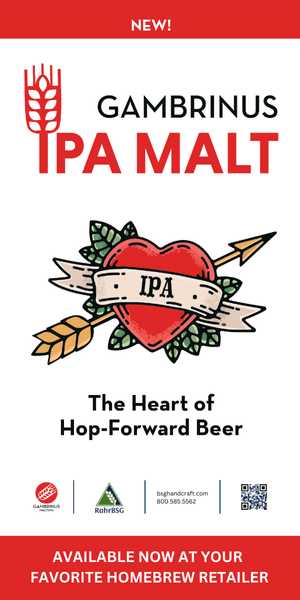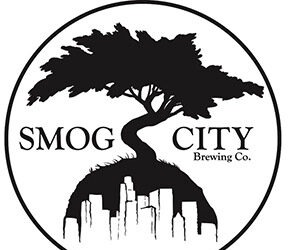Dogfish Head Craft Brewery
Dear Replicator,
My love for Dogfish Head (DFH) started while watching their short-lived Brew Masters TV mini-series. I loved how they went into the brewery and showed the ins and outs. Living in Minnesota, DFH wasn’t available. The closest distribution point was Wisconsin. Next thing I know, I purchased two cases to bring back. One of my buddies only had two on his list: Burton Baton and 120 Minute IPA. So naturally, I had to try both. That was the beginning of my love for Burton Baton. I am lucky enough now to be able to get it in Minnesota, but this beer is one of the greats and everyone should know about it.
Brad Sukut
Eagan, Minnesota

Coming from the Mid-Atlantic region, I’ve had my fair share of Burton Baton and can affirm how tasty a treat it really is. Dogfish Head (DFH) is the culmination of Founder and Head Brewer Sam Calagione’s dreams mixed with a tenacity to create his own path, especially in the face of establishment. When told no, Sam had a history of seeking an alternative route. After developing an appreciation of high-quality craft beer during a stint as a waiter at Nacho Mama’s in New York City, Sam became smitten with homebrewing. His first concoction wasn’t the prototypical ESB, brown ale, or stout, but rather a pale ale with cherries. It was an immediate success that laid the groundwork for numerous culinary-inspired beers to come.
Having lobbied to change the state liquor laws of Delaware with the help of local lawyer Dick Kirk, DFH became the first brewpub to open in the state. With it came media coverage and notoriety even before DFH opened in 1995. There was only one small problem with such exposure; there were now a lot of thirsty patrons to satisfy and Sam was brewing on a modest 10-gallon (38-L) (yes, not BBL) system. To keep up with demand and ensure that taps never ran dry, he was brewing almost every day.
DFH serves up the typical range of beers that many breweries have, including quite a few high-octane brews that feature the “Dogfish Danger Cap” — a neon yellow-green cap with a Dogfish exclamation point to indicate that the drinker should savor the brew. Their iconic IPAs are known for being continually hopped for the duration of the boil. They’ve also established several collaborative brews under the Ancient Ales series with Dr. Patrick McGovern from the University of Pennsylvania, who analyzed ancient earthen-ware to bring ancient brew recipes into a more modern light. More recently DFH has launched SeaQuench and Slightly Mighty, two low-calorie beers, a Gose-ish beer and an IPA respectively, that pack quite the flavor punch.
Another aspect of DFH that I personally find intriguing is their Beer and Benevolence (B&B) program. Every year, the B&B program touches around 200 non-profits. In 2018 alone, the 13th annual Dogfish Dash gathered 3,000 runners from 28 states and raised $150,000 for The Nature Conservancy, Delaware chapter. Also, the first Dogfish Head I.P.A. (I Pedal A-Lot) attracted nearly 1,000 cyclists to southern Delaware. They raised $30,000 for bike safety and advocacy by the Urban Bike Project and Sussex Cyclists. The funds allowed for the construction of three cycle service stations along Delaware bike paths.
One can’t discuss DFH in 2019 without mentioning their merger with Boston Beer Company, who owns the brands of Sam Adams and Angry Orchard. On May 9, 2019, an announcement was made that shocked the craft beer world. “More than a dozen of our peers have sold to international conglomerates, others have come together through platforms bringing a handful of craft breweries together in rollups,” announced Sam and Mariah Calagione in a statement. “While neither of those strategies appealed to us, we did realize that Dogfish Head would be a stronger company with the support of our friends at Boston Beer, and vice-versa.” Jim Koch also reassured the community, “Just as important as our passion for brewing is our commitment to championing and preserving the independent, American craft movement.” Each brewery will retain their individual status as independent craft brewers. But back to your request . . .
Mark Sarfarik, Dogfish Head’s Brewmaster, provided us with all the juicy details about this beer. “Burton Baton is a 10% ABV imperial IPA that is a blend of 90 Minute IPA with an English old ale that is aged in our 10,000-gallon (380-hL) oak foeders. Since most people don’t have the ability to wood-age beers at home, this recipe is more of a composite of the two threads.” In addition, Mark conferred several additional tips for the beer, some of which are included in the “Tips for Success” section of the recipe. First off, the dry-hop timeline for the beer should be no more than 3–4 days as extended aging can result in harsh, tannic-type flavors. With the majority of dry hopping protocols, most of the magic is really accomplished in the first 72 hours. Secondly, DFH’s oak foeders are fairly neutral so they’re more interested in the oxidative character that oak aging brings. To this end, Mark suggested the addition of the honey malt to drive a bit of that toffee sweetness. Finally, the water profile at the brewery is fairly soft with only 20 ppm calcium. Through additions, they arrive at ~70 ppm of calcium and during the mash you should be striving for a pH between 5.3 and 5.4.
With all these tips and tricks, hopefully you’ll be able to recreate Burton Baton for enjoyment and sharing at home. Cheers!
Dogfish Head Craft Brewery’s Burton Baton clone

(5 gallons/19 L, all-grain)
OG = 1.088 FG = 1.016
IBU = 65 SRM = 11 ABV = 9.5%
Ingredients
15 lbs. (6.8 kg) pale ale malt
0.5 lb. (0.23 kg) crystal malt (60 °L)
0.5 lb. (0.23 kg) honey malt
0.2 lb. (90 g) amber malt
1 lb. (0.45 kg) corn sugar (10 min.)
15.2 AAU Warrior® hops (60–30 min.) (1 oz./28 g at 15.2% alpha acids)
9.5 AAU Simcoe® hops (30–15 min.) (0.75 oz./21 g at 12.6% alpha acids)
4.1 AAU Palisade® hops (15–0 min.) (0.5 oz./14 g at 8.2% alpha acids)
14.4 AAU Palisade® hops (0 min.) (1.75 oz./50 g at 8.2% alpha acids)
2.1 oz. (60 g) Simcoe® hops (dry hop)
2.9 oz. (80 g) Amarillo® hops (dry hop)
1.4 oz. (40 g) Palisade® hops (dry hop)
1.1 oz. (30 g) American medium-toast oak chips (optional)
Wyeast 1098 (British Ale) or White Labs WLP007 (Dry English Ale) or Lallemand Nottingham yeast
3⁄4 cup corn sugar (if priming)
Step by Step
Mill the grains, then mix with 5.1 gallons (19.2 L) of hot strike water to achieve a single infusion rest temperature of 155 °F (68 °C). Adjust mash pH to 5.3–5.4 using lactic acid, if needed. Hold at this temperature for 60 minutes. Mashout to 170 °F (77 °C) if desired.
Vorlauf until your runnings are clear before directing them to your boil kettle. Batch or fly sparge the mash and run-off to obtain 6.5 gallons (25 L) of wort. Boil for 60 minutes. Add the Warrior® incrementally from 60–30 minutes, then add the Simcoe® incrementally from 30–15 minutes, and finally, add Palisade® incrementally from 15 minutes to the end of the boil. Also, at 15 minutes left in boil, you may want to add either Irish moss or Whirlfloc as fining agents. At 10 minutes left, add the corn sugar.
After the boil, add the flameout hops indicated and whirlpool for 10 minutes before rapidly chilling the wort to 63 °F (17 °C). Oxygenate with pure oxygen and pitch a healthy count of yeast. Allow the beer to free-rise to 68 °F (20 °C).
Once primary fermentation is complete, dry hop with all three varieties. After 3 days, drop the temperature to 55 °F (13 °C) and after 24 hours, rack the beer to secondary. If oaking, add it now (1.1 oz./30 g of medium-toast American oak) and age for 14 days. Bottle or keg the beer and carbonate to approximately 2.5 volumes.
Dogfish Head Craft Brewery’s Burton Baton clone
(5 gallons/19 L, extract with grains)
OG = 1.088 FG = 1.016
IBU = 65 SRM = 11 ABV = 9.5%
Ingredients
8.25 lbs (3.74 kg) extra light dried malt extract
0.5 lb. (0.23 kg) crystal malt (60 °L)
0.5 lb. (0.23 kg) honey malt
0.2 lb. (90 g) amber malt
1 lb. (0.45 kg) corn sugar (10 min.)
15.2 AAU Warrior® hops (60–30 min.) (1 oz./28 g at 15.2% alpha acids)
9.5 AAU Simcoe® hops (30–15 min.) (0.75 oz./21 g at 12.6% alpha acids)
4.1 AAU Palisade® hops (15–0 min.) (0.5 oz./14 g at 8.2% alpha acids)
14.4 AAU Palisade® hops (0 min.) (1.75 oz./50 g at 8.2% alpha acids)
2.1 oz. (60 g) Simcoe® hops (dry hop)
2.9 oz. (80 g) Amarillo® hops (dry hop)
1.4 oz. (40 g) Palisade® hops (dry hop)
1.1 oz. (30 g) American medium-toast oak chips (optional)
Wyeast 1098 (British Ale) or White Labs WLP007 (Dry English Ale) or Lallemand Nottingham yeast
3⁄4 cup corn sugar (if priming)
Step by Step
Bring 6.5 gallons (25 L) of water to roughly 150 °F (66 °C). Steep all the specialty malts 15 minutes before removing and draining. Add the extract, with stirring, before heating to a boil. Boil for 60 minutes following the all-grain recipe for hopping and fermentation directions.
Tips for Success:
Mark adds, “this is a very high-gravity fermentation, so oxygen rather than air is recommended for wort aeration. Pitching double the normal amount of yeast is highly recommended.” If you have trouble finding Palisade®, Willamette is a good substitute, or if Warrior® isn’t available, any high alpha-acid bittering hop should suffice. Another unique technique DFH uses is called continually hopping. It means that small charges of hops are added roughly every minute or so. “This can be emulated at home by dividing each variety up into manageable, small quantities and spreading the addition out over the times indicated in the hopping schedule.”



